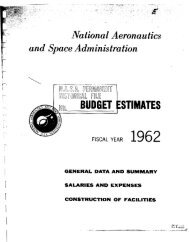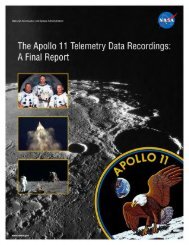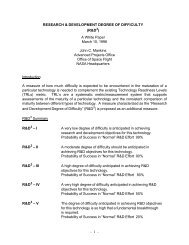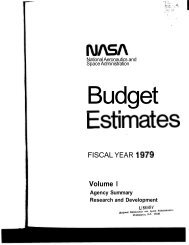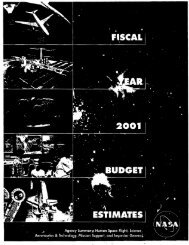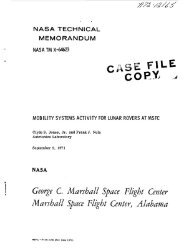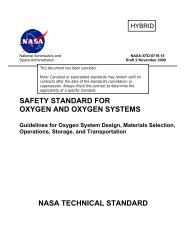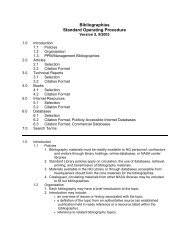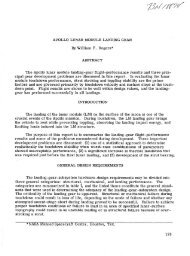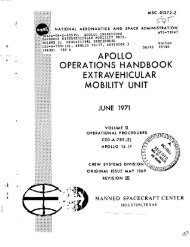crimping, interconnecting cables, harnesses, and wiring - NASA
crimping, interconnecting cables, harnesses, and wiring - NASA
crimping, interconnecting cables, harnesses, and wiring - NASA
Create successful ePaper yourself
Turn your PDF publications into a flip-book with our unique Google optimized e-Paper software.
Page 71 of 114<br />
<strong>NASA</strong>-STD-8739.4 with Change 6<br />
inches) in length, then ties <strong>and</strong> clamps may be removed only to the point where the wires leave<br />
the main bundle. Pull the insulated wire perpendicular to the wire exit face of the connector<br />
device. Wire shall not be pulled to a force in excess of 80 percent of the specified minimum<br />
crimp tensile requirement (Requirement). This requirement shall be met to avoid damage to the<br />
wire/contact crimp joint (Requirement).<br />
NOTE: When the wire is pulled at any angle exceeding 5° from the<br />
perpendicular, the contact may bind inside the connector <strong>and</strong><br />
give a false reading.<br />
c. When a shielded wire is being pulled, the wire shall be gripped between the sealing grommet<br />
of the terminal junction module <strong>and</strong> the shield termination (Requirement).<br />
13.8.3 Solder Contacts. All solder contacts that have float shall be free of flux <strong>and</strong> other<br />
contamination <strong>and</strong> should be checked to assure they have normal float characteristics after<br />
soldering <strong>and</strong> cleaning (Requirement).<br />
13.8.4 Coaxial Cable Requirements. Coaxial <strong>cables</strong> shall pass electrical requirements (e.g.,<br />
voltage st<strong>and</strong>ing wave ratio (VSWR), insertion loss, <strong>and</strong> other performance tests specified on the<br />
engineering documentation). Prior to assembly or installation, the following inspections shall be<br />
conducted, as appropriate (Requirement).<br />
a. Verify proper strip length <strong>and</strong> assembly of center conductor into contact.<br />
b. Verify proper securing of the outer conductor.<br />
c. Verify that the center contact location meets requirements for proper mating.<br />
d. Visually verify undamaged condition of mating surfaces <strong>and</strong> coupling means.<br />
13.8.5 Torque Verification. Verify that torque of connector backshells, strain relief clamps, etc.,<br />
is as specified in the engineering documentation.



